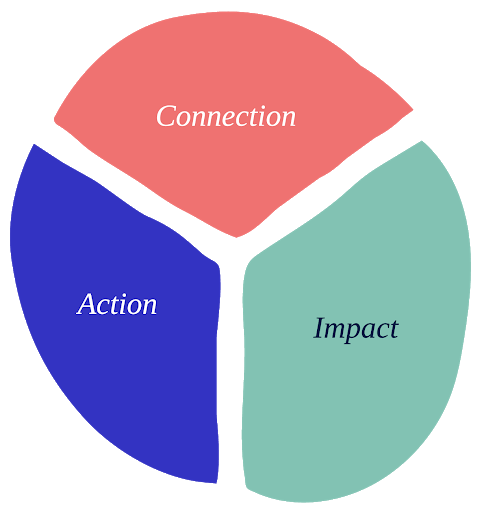Crafting a Comprehensive Corporate Sustainability Policy: A Step-by-Step Guide
In today's business landscape, a sustainability policy is more than a buzzword; it is an essential element of strategic planning and stakeholder engagement. For B2B organizations, crafting a well-defined sustainability policy sets you apart from competitors, helps attract environmentally conscious partners, and contributes positively to the planet. Here's an in-depth guide on creating an effective sustainability policy tailored for your B2B organization.
Understand the Importance of a Sustainability Policy
Before diving into creating a sustainability policy, it's vital to understand why sustainability is critical. A sustainability policy helps:
Reduce Environmental Impact: Implementing sustainable practices such as lowering greenhouse gas emissions and decreasing waste reduces negative environmental impacts.
Enhance Brand Reputation: Companies known for their commitment to sustainability often enjoy a better reputation, which can attract new customers and retain existing ones. Brand reputation is also critical with current and future employees.
Ensure Regulatory Compliance: Adhering to environmental regulations is crucial. A robust sustainability policy helps ensure your organization meets legal requirements and avoids potential fines.
Foster Innovation and Efficiency: Sustainability often drives innovation. It encourages the development of new processes and technologies to enhance efficiency and reduce operational costs.
Attract and Retain Stakeholders: Employees, customers, and suppliers increasingly prefer to engage with organizations demonstrating a track record of environmental and social responsibility.
Mitigate Risks: Proactively addressing environmental and social risks can help your organization avoid potential crises and manage risks more effectively. An effective policy will help you identify risks while writing it and create a process for managing risks as they appear.
Define Your Material Issues
Conduct a comprehensive assessment of your organization’s current environmental impact using recognized industry frameworks. Depending on your specific industry, this could include areas like:
Energy Consumption: Many companies have significant energy footprints due to business processes or office footprints.
Waste Generation: Depending on your organization, you could be producing a significant amount of waste without a plan for its disposal.
Supply Chain Practices: In today’s global environment, companies are responsible for who they buy from and the practices of their suppliers.
Water Consumption: As a scarce resource,water use can be a material issue depending on your industry.
Employee and Community Engagement: Many companies seek and invest in opportunities to improve the communities they operate it. They’re also incentivized to maintain high levels of employee satisfaction to avoid costs and business slowdowns.
Data Privacy and Security: Data privacy and security apply to all companies. It is specifically material to those that store and keep customer data.
Here are some resources to discover your material sustainability topics:
- SASB
- Check out competitors' or industry leaders' reports and disclosures
Connect Initiatives to Material Issues
A sustainability policy is more effective when it shows tangible action taken by the company for different identified material categories. Try to show 2-3 initiatives or metrics for each category. Here are some examples of initiatives linked to their material counterparts:
Energy Consumption:
- Annual energy audit to identify inefficiencies in our current energy use.
- Explore opportunities to invest in renewable energy sources like solar or wind.
- Establish metrics to monitor energy usage regularly and assess the effectiveness of implemented measures.
- Complete an annual carbon footprint.
Data Privacy and Security:
- Conduct regular security audits and penetration testing.
- Implement strict access controls and authentication protocols to limit who can view or modify sensitive data. This includes role-based access control (RBAC) and multi-factor authentication (MFA).
Supply Chain Practices:
- Evaluate and select suppliers based on their sustainability practices.
- Encourage and support suppliers in adopting eco-friendly materials and technologies.
- Develop guidelines for sustainable sourcing.
Related: 5 Proven Strategies to Reduce Scope 3 Emissions in Your Business
Engage Stakeholders
Involving key stakeholders in your sustainability policy is crucial for its success. Consider how each action might affect different stakeholder groups and request feedback accordingly. Consider engaging:
Employees: Gather input from employees at all levels. Their insights can help identify practical sustainability measures and foster a culture of sustainability within the organization.
Customers: Understand the sustainability expectations and preferences of your customers. Their feedback can guide your policy and demonstrate responsiveness to their values.
Suppliers: Collaborate with suppliers to integrate sustainable practices into your supply chain. Encourage them to adopt eco-friendly practices and support responsible sourcing.
Investors: Communicate how your sustainability policy will impact financial performance and risk management. Investors increasingly value sustainability as part of their decision-making process.
Draft the Policy
With your material topics, current impact, and stakeholder input in mind, start drafting your sustainability policy. Your policy should include:
Introduction. Clearly state the policy's purpose to provide context and direction. Explain why sustainability is vital to your organization, emphasizing its importance for long-term success and responsibility.
Commitment: Declare your commitment to sustainability, showing a strong organizational stance. Outline the policy's scope and applicability to ensure all relevant areas and activities are covered.
Material Topics and Linked Initiatives: List your specific material items to identify key focus areas. Highlight associated initiatives to show how each material topic will be addressed.
Roles and Responsibilities: Define who will be responsible for policy implementation and oversight to ensure clarity and accountability. Identify key personnel or departments involved to facilitate effective execution and monitoring.
Monitoring and Reporting: Describe how you will track progress towards your stated topics to measure effectiveness. Outline reporting mechanisms and frequency to ensure transparency and accountability in communicating progress.
Review and Update: Specify how often the policy will be reviewed to maintain relevance and accuracy. Ensure updates reflect organizational changes, industry standards, and environmental regulations to stay current and effective.
Communicate the Policy
Effectively communicating your sustainability policy is crucial for its success. Use various channels to ensure all stakeholders are informed:
Internally, share the sustainability policy through company meetings, internal newsletters, and the intranet. Ensuring that employees understand their roles and responsibilities within the policy is crucial for effective implementation and engagement across the organization.
Externally, publish the policy on your website and share updates through social media to reach a broader audience. Communicating with clients and suppliers about your sustainability efforts demonstrates transparency, which can enhance your organization’s credibility and build trust with stakeholders.
Related: The Essential Steps for Establishing a Productive Sustainability Committee in a B2B Organization
Implement and Monitor
Putting your sustainability policy into action involves seamlessly integrating sustainability practices into your daily operations. This means incorporating sustainability into everyday business processes and decision-making, ensuring that all aspects of your company align with your environmental goals. By embedding these practices into the core of your operations, sustainability becomes a fundamental part of your business culture, driving consistent and meaningful impact.
Monitoring progress is crucial for evaluating the effectiveness of your sustainability initiatives. Use key performance indicators (KPIs) to review performance against your targets annually. Tracking this data allows you to identify areas for improvement and make informed decisions. Based on performance data and stakeholder feedback, make necessary adjustments to ensure continuous improvement. This iterative process helps keep your sustainability efforts dynamic and responsive to changing conditions, ensuring your company remains committed to its environmental goals.
Report Progress
Transparency is essential for maintaining trust and credibility. Providing detailed updates on sustainability performance through annual reports is essential for maintaining transparency and accountability. These reports offer a comprehensive overview of your company's efforts, showcasing achievements, identifying areas for improvement, and setting future goals. By including detailed data and analysis, annual reports help stakeholders understand the impact of your sustainability initiatives and reinforce your commitment to continuous improvement.
In addition to annual reports, keeping your company website updated with progress and milestones is a dynamic way to communicate your sustainability journey. Regular website updates can include news articles, case studies, and interactive content that highlight significant achievements and ongoing projects. This not only keeps stakeholders informed but also engages a broader audience, demonstrating your company's dedication to sustainability and encouraging support from customers, partners, and the community.
Stakeholder meetings provide an important platform for discussing sustainability achievements, challenges, and future plans. These meetings facilitate open dialogue, allowing stakeholders to voice their perspectives and contribute to the development of your sustainability strategy. By addressing both successes and obstacles, you can foster a collaborative environment that drives innovation and shared commitment to sustainability goals. Regular communication through these meetings helps build trust and ensures that all stakeholders are aligned with your company's vision and efforts towards a more sustainable future.
Review and Improve
Sustainability is an ongoing journey requiring regular review and adaptation. Regular reviews of your sustainability policy are crucial to ensure it remains relevant and effective. By periodically reassessing your policy, you can identify areas that need improvement and adjust your strategies accordingly. Gathering feedback from stakeholders is an essential part of this process, as it provides valuable insights into the practical application of your policy and highlights any gaps or challenges that need addressing. Incorporating this feedback helps refine your sustainability efforts and ensures that your policy evolves in line with the needs and expectations of those it impacts.
To maintain a high level of sustainability performance, embrace continuous improvement. This involves staying abreast of new environmental regulations, technological advancements, and industry best practices. By adapting to these changes, you can enhance your sustainability initiatives and maintain a competitive edge. Continuous improvement also means being proactive in identifying opportunities for innovation and efficiency, ensuring that your sustainability policy not only meets current standards but also sets a benchmark for future practices.
Conclusion
Creating a sustainability policy for your organization is a strategic move towards a more responsible and sustainable future. By setting clear goals, engaging stakeholders, and committing to continuous improvement, your organization can positively impact the environment and society while enhancing business success. Remember, sustainability is not a destination but a journey—one requires dedication, collaboration, and a proactive approach. Embrace this journey and lead your organization toward a sustainable future.
Don’t miss our other blogs on B2B organizations





















